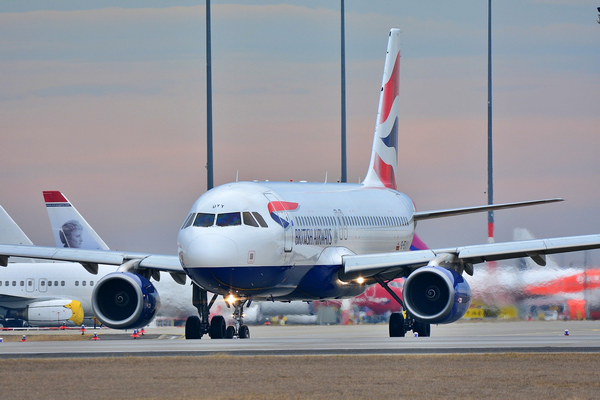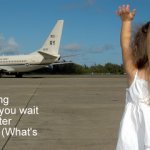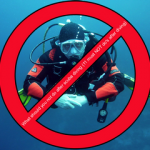
Flying after diving guidelines to remain safe
Flying after diving guidelines are there to keep you safe. You don’t want to spend your time scuba diving and having a great time, only to ruin your fun by getting decompression sickness!
It’s not recommended to dive and fly on the same day for safety reasons, but can you dive and fly on the same day? Whether you dive and fly on the same day is down to the risk you’re willing to take, the number of dives, if these dives involved decompression stops and the maximum altitude you’ll be flying. PADI recommend you wait 12-18 hours before you board a plane, whereas BSAC and the U.S. Air force recommend a 24 hour interval.
The best way to do more diving is to book yourself on a scuba diving liveaboard. You can check the latest and best deals on liveaboards using the following window:
Flying after diving guidelines
The various organisations around the world have different stipulations about flying after diving.
- British Sub Aqua Club (BSAC): While BSAC ’88 tables indicate divers can fly in a pressurised aircraft on a code B, BSAC suggests you wait 24 hours between diving and flying if possible.
- Divers Alert Network (DAN): DAN recommends a 12 hour minimum surface interval before flying for a single no-decompression dive. But for multiple days of diving and for dives requiring decompression stops, their recommended preflight surface interval is 18 hours.
- The Professional Association of Diving Instructors (PADI): PADI’s flying after diving guidelines say that for a single no-decompression dive, a minimum preflight surface interval of 12 hours is suggested. Whereas for multiple days of diving or for dives requiring decompression stops, a minimum preflight interval of 18 hours is suggested instead.
- The U.S. Air Force: The U.S. Air Force recommend a 24 hour surface interval before flying.
- The U.S. Navy: In contrast to The U.S. Air Force, the U.S. Navy use table 9-6 to work out how long the surface interval should be. The recommended surface interval according to the U.S. Navy depends on the number of dives and their depth, together with the height and type of flight. For example is the flight on a commercial airline and pressurised?
- Dive computers: Most scuba divers use dive computers to monitor their decompression and nitrogen saturation. All dive computers have a no-fly monitor and they will tell you when it’s safe to fly. Dive computers are particularly useful when you’re doing multiple dive days or if you’re doing decompression stop dives. But also, if you are doing nitrox diving or other mixed gas type diving.
Flying after diving and being safe – better safe than sorry!
My scuba diving training was done with BSAC many years ago. I was also taught, and since taught others the same, that you should always wait 24 hours before getting on a flight after diving.
So going back to the question: Can you dive and fly on the same day? In theory yes you can according to some of the diving organisations.
But this will be subject to the type of diving you did; i.e. did it involve decompression stops. Or have you done multiple dives on the same day or over a period of a few days, for example on a liveaboard trip.
However, what you also need to consider are the various decompression sickness risk factors. The time taken for two different people to decompress will be very different.

For example and to exaggerate the decompression safety point:
- Scuba diver number one: Aged 28 and is extremely fit as they go to the gym three times a week. This person is not over weight and they don’t smoke, they never drink alcohol and don’t take drugs. Nor do they use a vape. They sleep very well and wake up to do half an hours yoga each day and 10 minutes of meditation.
- Scuba diver number two: Aged 55 and very unfit as they never do any exercise. This person is extremely overweight and is classified as obese. This scuba diver smokes 20 cigarettes a day, but also uses a vape as they are trying to give up smoking. They also use recreational drugs on occasion too. This person loves to drink and will drink several pints of beer every evening, especially when diving, and often dives with a hangover. As a result of being overweight, this person doesn’t sleep very well and suffers from sleep apnoea. The lack of sleep makes this person constantly tired and fatigued.
I know the traits of these two scuba divers is to the extreme, but I did this to explain my point. The time it takes scuba diver number one to decompress compared to scuba diver two will be different. Therefore to use the same tables or computer doesn’t always make sense. But what I want to highlight is that it’s better to be safe and be caucious when it comes to decompression.
I’d say to wait at least 24-hours before you fly, so don’t dive and fly on the same day!
But before you decide on how long to wait before you get on a plane after diving; you should read this:
Divers Alert Network – DAN article:- An Ascent to Altitude After Diving Causes Complications. This article to demonstrate the problems that can come from not following safe diving guidance.
The Diver:
He is a 48-year-old man, 6 feet, 1 inch (185cm), who weighs 225 pounds (101kg). At the time of his dives, he had no medical problems and used no medication. He has been a certified diver since 1999, with 78 dives.
The Dives:
He spent four days diving in Mexico. During that time, he made eight dives, with a maximum depth of 82 feet (25 msw). His last dive went to a maximum depth of 53 fsw (16 msw) and ended at 9:20 p.m. All dives lasted 48 minutes, with an hour surface interval between dives. He made all his dives on air, using a computer as his dive planner. He had no problems with any of his dives and felt fine after his last dive, which had to be rescheduled from the previous night.
The Complications:
The next day, 12 hours after his last dive, he flew a short hop in an unpressurized aircraft at 3,000 feet (904 meters). After a three-hour layover, he then flew on a pressurized charter flight home. He made the flight home without incident, and felt no different than when he left for his vacation. The next morning he woke up feeling fatigued. During the day, he experienced problems with short-term memory. A DAN Member, he contacted the DAN Diving Emergency Hotline; he was advised to go to a hospital for evaluation. The medical facility closest to him did not have a hyperbaric facility.
The Diagnosis:
He arrived at the local hospital and, after an evaluation of his symptoms, he was placed on 100 percent oxygen via non-rebreather face mask. After one hour of oxygen, he said his fatigue and confusion had not resolved. He was advised to go to the university medical center hyperbaric facility for further evaluation. He drove himself there the next day, another 24-hour delay.After further evaluation, he was diagnosed with DCS-II and placed in the hyperbaric chamber for treatment.
To read the full article: Divers Alert Network – DAN – An Ascent to Altitude After Diving Causes Complications
What happens if you fly too soon after scuba diving?
If you fly too soon after scuba diving this can lead to decompression sickness (DCS). Depending on how deep your last dive was and how long between surfacing and flying, will affect the risk of DCS.
As you ascend in an aircraft the air pressure will decrease. As a result of this reduced air pressure, any dissolved gases will come out of solution as bubbles. It is these bubbles that cause decompression sickness.
The worst case scenario if you fly too soon after scuba diving is you could die from decompression sickness.
I hope you enjoyed this article about can you dive and fly on the same day
I’d love to hear from you. Tell us about your adventures of diving and snorkelling. Please use the comments section below. Please also share your photos. Either from your underwater cameras or videos from your waterproof go-pro’s!
If this article hasn’t answered all of your questions. If you have more questions either about snorkelling or scuba diving (or specifically about can you dive and fly on the same day), please comment below with your questions.
There will also be many more articles about scuba and scuba diving safety tips (and on snorkelling too) for you to read and learn about this fabulous sport.
Have fun and be safe!




